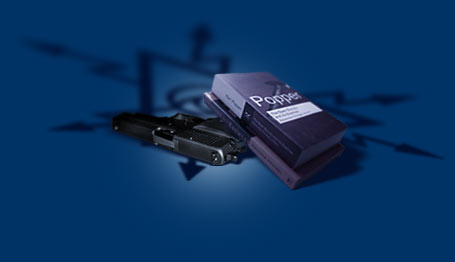We are developing the social individualist meta-context for the future. From the very serious to the extremely frivolous... lets see what is on the mind of the Samizdata people.
Samizdata, derived from Samizdat /n. - a system of clandestine publication of banned literature in the USSR [Russ.,= self-publishing house]
|
I haven’t read anything by the Guardian columnist Sir Simon Jenkins for a while. He’s one of those infuriating grandees of the media who can be relied upon to say a mix of sensible things along with some jaw-dropping pieces of rubbish. Case in point in the rubbish department, regarding the mass murders by Islamists in a Kenya shopping mall (H/T, Douglas Murray in the Spectator) :
The modern urban obsession with celebrity buildings and high-profile events offers too many publicity-rich targets. A World Trade Centre, a Mumbai hotel, a Boston marathon, a Nairobi shopping mall are all enticing to extremists. Defending them is near impossible. Better at least not to create them. A shopping mall not only wipes out shopping streets, it makes a perfect terrorist fortress, near impossible to assault.
“Celebrity building”. Note the sneer. So what is Sir Simon’s suggestion: that Kenyans go back to living in all those cute little mud huts and not frequent markets where more than a handful of folk are in the vicinity, is that it? And that Westerners, or indeed anyone else, should stop going to large buildings, such as theatres, football stadiums, rock concerts, large rail stations, underground stations, skyscrapers….? We stop running marathons, or gathering for other peaceful reasons, lest nutters go on the rampage? Of course, people can choose to avoid such events and places as much as they want, but Sir Simon, a fan of planning legislation, no doubt would not draw the line at just letting people associate where they want.
It is not as if he is even consistent about this issue of density of people in certain places anyway. Jenkins and those of like minds often also decry suburbia, and wish we all went back to living in denser cities and used public transport (which tends to be more vulnerable to terrorist attacks). It is obscene in my view, as people were still dying as a result of the shootings in Kenya, that this fuckwit writes about “the modern obsession with celebrity buildings”, as if there was something almost shameful or foolish about erecting them and enjoying visits to them.
What this man is proposing is, to put it simply, a form of surrender. I remember when George Bush responded initially to 9/11 by urging people to continue shopping and enjoying life as a way to defeat the Islamists. He got criticised for this, but he was right. According to the logic of what Jenkins says, we should stop being Western, stop making big things, or glossy, flash buildings that people enjoy visiting, and revert to a smaller set of gathering places instead, at least for however long it takes before the death-cultists of Islam decide to turn their attentions elsewhere. Great. Let’s hide under our beds. (So long as the beds are not too large or ostentatious, of course.)
Of course, Jenkins is an opponent of large, modern buildings and has been banging the drum in opposition to such things as long as I can remember. But I did not think he would resort to this line of argument. What is this man going to say if a bomb is set off in one of his favourite classical pieces of architecture, I wonder?
(I have updated my item a bit to remove some clunky expressions. Insufficient coffee and anger do not make for great writing.)
The Guardian has been talking about Islamic dress for woman and I keep waiting to see someone frame this as more than just either “the state needs to ban it” or “it is a matter of freedom of choice for individuals”.
These are both useful points but they actually miss the real issue, which is allowing civil society to actually function.
Yes, I agree the state has no business telling people what they can or cannot wear other than in the most limited utilitarian circumstances (for example you should have to show your face when giving evidence in court and similar situations where identity and personal reactions to question need to be judged by a jury). So if someone wants to wear a burqua or pink rabbit slippers and a tutu or a Nazi arm band, that should be entirely up to them in almost every circumstance.
But that leads us to the real question: I support the right of people to wear whatever they wish. But I also support the right of people to react to that decision as they wish, as long as it does not involve violence or threats thereof.
The reason I mentioned a Nazi arm band in the above examples is that it is an item of clothing that is likely to produce a very negative reaction from many observers. People refusing to do business with, or offering a job to, or actively criticising someone, for wearing a Nazi arm band would strike many as acting perfectly reasonably and within their rights. Hopefully things are not yet so bad that an employer refusing to hire someone who turns up to a job interview wearing a Nazi arm band would find themselves in trouble with the law (but hey, anything is possible these days).
A ‘reasonable man’ on most juries would accept that as a Nazi arm band strongly implies that person supports Nazi values and ideology, it is perfectly reasonable to discriminate against such a person if you find those valued abhorrent, and not want such a person to represent you in the marketplace. After all, that Nazi arm band represents an ideology steeped in collectivist violence, irrational prejudice, misogyny, the complete replacement of civil society with ideologically directed interactions… in short, the totalitarian imposition of certain ways of life on everyone.
Now what else does that remind you of?
In other words, a Nazi arm band is very much like a burqua in the eyes of a great many people.
So yes, I demand that people be able to wear whatever they want without being threatened by the state. And I demand that other people be allowed to infer certain things from what others wear, and treat them accordingly, without the law preventing them from doing so.
That is right, I am in favour of people’s right to discriminate on the basis of another person’s views.
Fortunately Obama and assorted hard-of-thinking folks across the political spectrum in the USA seem to have backed away from becoming allies of Al Qaeda in Syria. But that means it looks like a fascinating lose-lose-win scenario is coming to pass: Al Qaeda and its allies lose, Hezbullah and its Iranian and Ba’athist allies lose, everyone else wins.
Syria’s deputy prime minister says the civil war has reached stalemate with neither side strong enough to win.
So Hezbullah and Al Qaeda are bleeding each other white in Syria in an attrition war that shows no sign of ending, and moreover this state of affairs costs us in the West not a penny.
Awesome.
I still think selling both sides ammo would be a really great idea as it would be hard to overstate the need to keep this on the boil as long as possible. Perhaps now is a good time to urge the UN to remain fixated on vital issues such as ‘climate change’ in Kazakhstan or ‘gender inequality’ in Nicaragua or ‘indigenous rights’ in Mordor or whatever, so they do not make any meaningful attempts to broker any unhelpful ceasefires.
The quick version of something the old plague-carrier said is that history repeats itself, the first time as tragedy, the second time as farce.
Second time as tragedy and farce would have been more accurate.
Top comment: “I did not set a red line, Bush did it and you are a racist”
Humiliated? As a prime minister and party leader, yes. But there are compensations.
To President Obama he can say, “Sorry guv, tried to help, but the boys just wouldn’t let me. We are going to remain neutral”. And then sotto voce he can add, “Neutral like you are ‘in terms of the Maldives or the Falklands, whatever your preferred term is'”
To Parliament, and through Parliament to the voters, he can say, with great ceremony “I respect your decision” and get all sorts of strange new respect from anti-war people while not losing the respect of those who thought British support for US military action against Assad was necessary, because, after all, he did try.
To Syria he can say all the right things without having to do anything. Given that it is damned difficult to know what to do, or even what is happening over there, that is a silver lining for him. In that link, Jim Miller says, “we need an explanation for the attack — whoever is responsible — that includes a motive.” Assad was winning. Why jeopardize that? A member of my family suggested that Assad might have said to his henchmen something equivalent to Henry II’s “Will no one rid me of this turbulent priest?” “Destroy those rebels in Ghouta, and I don’t care how you do it.” Bashar Assad is an evil man, which does not make his enemies good.
Was this vote a good thing or a bad thing to happen? I do not know.
It is a generator of ironies, and not just for Cameron.
This is the beginning of a piece by Tony Blair that Guido linked to a few days ago. The rest of it is behind the Times paywall. But I think the basic folly that MPs were voting against, and which Blair presumably goes on to enthuse about, is actually quite well described:
The announcement of the summit in Jordan this week, after the use of chemical weapons in Syria, is very welcome. Western policy is at a crossroads: commentary or action; shaping events or reacting to them. After the long and painful campaigns in Iraq and Afghanistan, I understand every impulse to stay clear of the turmoil, to watch but not to intervene, to ratchet up language but not to engage in the hard, even harsh business of changing reality on the ground. But we have collectively to understand the consequences of wringing our hands instead of putting them to work.
But what is now collectively understood is that the consequence of this determination to be for ever “shaping events” and “changing reality on the ground” in the Muslim world only seems to be futile wars which expend much treasure and blood but accomplish very little. That, I think, is what MPs were voting against, egged on by just about all their voters. Where, ask the voters, is the British national interest in all this proposed action? What on earth is so wrong with reacting to events?
However, Blair’s claim that the choice is between ratcheting up language and taking action is surely wrong. The idea of all the verbal ratcheting of recent days has been to hustle MPs into voting for action. If the idea of action is now set aside, the verbals will be dialled down again.
By any reasonable definition, Maj Nidal Hasan’s 2009 rampage at Fort Hood, Texas was a terrorist attack. He proudly admits that he killed in the service of the Taliban, and witnesses say that he shouted “Allahu Ackbar!” as he fired. The Obama government, though, continues to insist that Hasan’s attack constitutes “workplace violence.”
– Bryan Preston.
Well, as far as The Community Organizer is concerned, his way of dealing with Islamist terrorism is to deny its existence. Deny it enough, and it will go away. (In case anyone starts accusing me of fear-mongering, I would immediately point out that accepting that there is a problem is not the same at all as knowing what specifically to do about it.)
Some people wants to intervene in Syria to stop Al Qaeda backed people and Hezbollah backed people killing each other.
Really?
I have a better idea… sell ammunition to both sides.
… and if ever there was a race in which I have no horse, this is it.
That said, at least the Egyptian military seem to be global ideology-free and thus are common-or-garden variety statist thugs as opposed to their democratically sanctioned but entirely totalitarian Islamo-Fascist rivals.
So as the blood of pro-totalitarian Islamists runs in the streets of Egypt, no doubt soon to be mixed with that of their enemies, perhaps those who hold up unfettered democracy as a self-evident Good Thing Everywhere and Always might care to reconsider and ponder where that can end up. I mean it is hardly as if a totalitarian regime has not won an election before.
Nah, never happen. Who am I kidding?
Or then again…
I regularly read David Thompson’s blog, and like many of his postings, this recent one pokes fun at a Guardian article, this time a piece by Mike Power, complaining about the alleged sexism of barbecues. The outdoor cooking of meat is bad, because men think that this is men’s stuff!
Thompson copies and pastes Power asking the following:
But, as several thousand years have passed since men had to kill our protein, make a fire, cook it and eat it, why is barbecuing seen as something women don’t or can’t – or, more accurately, shouldn’t – do? How – and why – do men continue to claim this sacred fire-space as a male-owned sanctuary where women are not permitted?
My immediate reaction to reading this quote at Thompson’s was that Mike Power was confusing a comedy routine with a seriously held idea.
I recall enjoying a TV show that happened on ITV4 TV a couple of years back, called Richard Bacon’s Beer and Pizza Club. Series 1 was particularly good, I thought. Series 2 got a bit above itself and happened in a bigger studio and with a bigger budget, and the guests became less quirky and amusing, and I didn’t enjoy it so much, but it was still great fun. The basic agenda was a bunch of blokes sitting around discussing their man-ness, with a mixture of genuine pleasure at often decidedly daft male rituals but also a healthy dose of self-mockery.
I recently caught a repeat of one of these shows, in which comedian Rufus Hound described how a typical male stunt, namely doing something that looked dangerous but wasn’t actually that dangerous, had become truly dangerous. It involved him putting a small puddle of something flammable in his hand and setting fire to it. His story of how this had all gone very wrong, on account of him making the puddle too big and then the setting of it on fire being delayed until the fluid had seeped between his fingers, won Hound the round where they were taking it in turns to recount their worst injuries. That his injury was self-inflicted while pursuing manly fun was central to why Hound was victorious. Doing it to yourself trumps anything that merely happens to you. How manly is that? In both a good way, and a ridiculous way.
The Beer and Pizza Club regularly featured shots of women in the audience, creasing up with laughter at the various masculinities that were being thus both enjoyed and mocked. Ah, men.
And, getting to back to the original point of this posting, I recall another Rufus Hound fire-based comedy moment on the B&P Club, when they were each describing their idea of a perfect day. Hound’s perfect day involved him cooking meat out on his patio and inviting the neighbours round. He said something like: “Nothing says manliness like cooking meat, out of doors, over a naked flame.” Much audience laughter, from both men and women. And from me. “Bacon” being a good name for the man genially presiding over this meaty mirth.
This is the kind of thing Power was on about. But what he misses, probably on purpose because he’s such a puritan, is that … it’s a joke! No, says Power. It’s not funny, I tell you! Stop enjoying yourselves!
And guess what, David Thompson agrees with me, although really he said it first and I am agreeing with him.
He quotes Power again:
This grilled-food gender split is ubiquitous, odd and unacknowledged.
And he responds thus:
This may strike readers as a bold, indeed preposterous, claim to make. One of the rituals of the barbecues I’ve attended is the good-natured parodying – one might say acknowledgment – of precisely those conventions. “Man make fire. Man cook meat,” etc. But perhaps we’re to imagine that only the keen social observers who write for the Guardian have ever noticed such things or found them worthy of amused comment. More to the point, it doesn’t seem to have occurred to Mr Power that quite a few people, male and female, actually enjoy the role-play opportunity of the barbecue – the theatre, the ritual, the fun. Even – heresy! – gendered fun.
Gendered fun. Spot on. Can’t have that.
I particular like Thompson’s invention of:
The Plastic Spatula of Oppression.
Not that men oppressing women is always and everywhere such a joke. That other favourite blogger of mine, Mick Hartley, recently did a posting about how a woman in Pakistan was stoned to death by her male relatives for the crime of possessing a mobile phone. What does Mike Power make of that, I wonder? My guess (please prove this wrong if you can) is … nothing, on account of him being (I further guess) an anti-anti-Islamist. It’s not that stoning women to death for having mobile phones is right, you understand. Merely that complaining about it is wrong.
I read an article describing confrontations between the fascist EDL and ‘anti-fascist’ protesters in the aftermath of the recent Woolwich atrocity. Ok, Marxist collectivists confronting non-Marxist collectivists, very much a row-within-the-family it seems… “Yah Boo Sucks! Our identity politics are better than your identity politics!”
But I have a question… were these fine anti-fascists also out in force when Islamic fascists were marching in London calling for the imposition of Sharia law?
Just curious, does anyone actually know?
|
Who Are We? The Samizdata people are a bunch of sinister and heavily armed globalist illuminati who seek to infect the entire world with the values of personal liberty and several property. Amongst our many crimes is a sense of humour and the intermittent use of British spelling.
We are also a varied group made up of social individualists, classical liberals, whigs, libertarians, extropians, futurists, ‘Porcupines’, Karl Popper fetishists, recovering neo-conservatives, crazed Ayn Rand worshipers, over-caffeinated Virginia Postrel devotees, witty Frédéric Bastiat wannabes, cypherpunks, minarchists, kritarchists and wild-eyed anarcho-capitalists from Britain, North America, Australia and Europe.
|



